For many people visiting Lisbon means one thing, trying as many Pasteis de nata (Portuguese Egg Tarts) as possible! We made it our mission while there to eat one every day – for research, of course! You’ll find these famous sweets in almost every bakery window you pass by. From mom-and-pop bakeshops to fancy patisseries, there are thousands of different tarts for you to try! But if you’re only in Lisbon for a short time or don’t have room to try them all, I’ve made a list of our favourite places! I divided the list into the various neighbourhoods to make it easy for you to try a tart while exploring that particular area of town. And it was interesting how the different regions’ personalities were reflected in the desserts themselves.
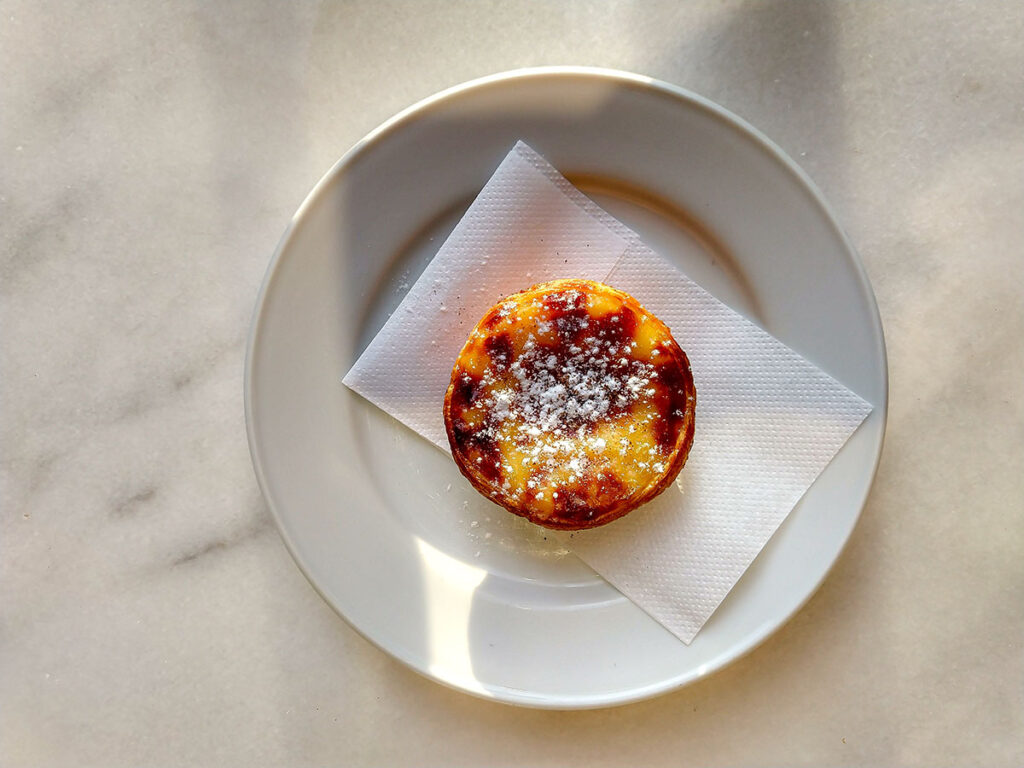
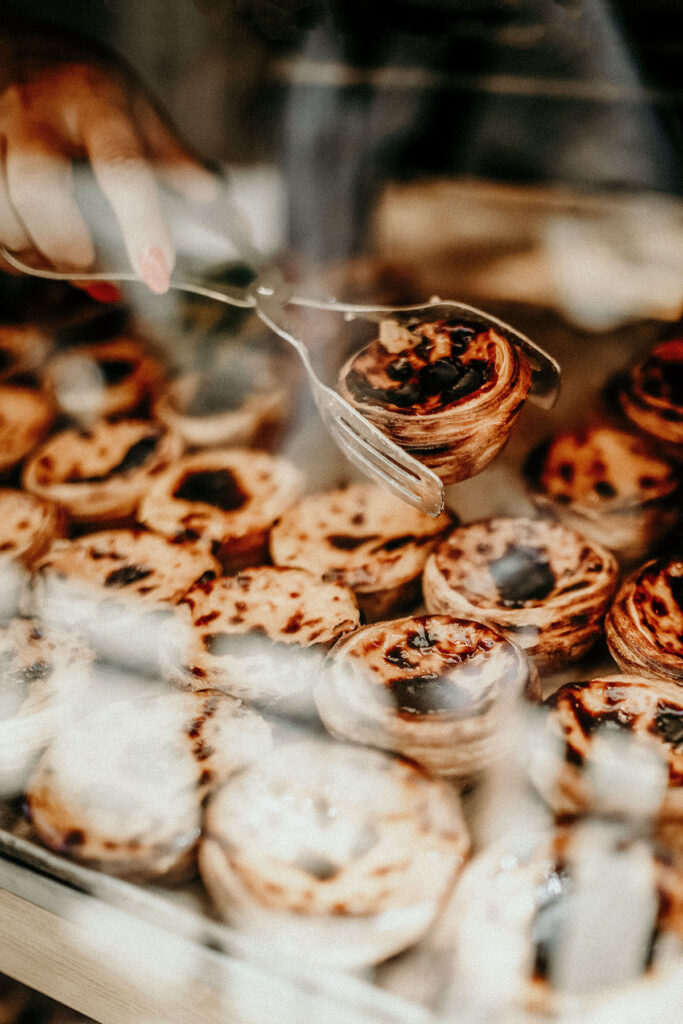
History
Before diving into the tart themselves, let’s take a minute to study the history of these desserts and why they are so iconic as a representation of Portugal’s culinary history. If you want to skip to the food, feel free to scroll down, but it’s nice to know a bit about why these treats are so important to eat when visiting Lisbon. The recipe for this famous sweet dates back over 300 years to a neighbourhood just west of the centre of Lisbon, in Belem. You can still visit the bakery to this day (Pastéis de Belém) and sample the very tart, which sparked thousands of copycats.
Jerónimos Monastery
The first pastel de nata (Pastel is singular, and Pasteis is the plural) was invented by the monks of Jerónimos Monastery. The monks would use egg whites to clean their clothes, and they ended up with thousands of egg yolks being thrown away. To use up the yolks and, in turn, sell some pastries to raise money for the monastery, the monks invented the recipe, which called for egg yolks as their main ingredient. Monks and nuns making and selling pastries is a practice dating back to the 16th century. In Barcelona, you can still try the convent cookies and/or travel to sample sweets from saints in Seville (not actually, but the alliteration was too good to pass up!) The word’ pastel de nata‘ is Portuguese for “cream pastry.”
Oddly enough, there is no cream used in making the pastries since the perfect custard filling is made with milk instead of cream. Cream would make the filling much too sweet and dense, whereas the milk produces that ideal jiggly, eggy custard which makes these desserts so tempting. After the Liberal Revolution of 1820 and the dissolution of the monasteries, the pastel de nata recipe was sold off to the current owners of the Pastéis de Belém. But the recipe was so popular that other bakeries started to attempt their own version to draw in the same crowds that Pastéis de Belém was gathering. Eventually, many succeeded, some with their own alterations and additions. When visiting Lisbon, there are many choices to find your perfect pastel de nata.
What Makes a Good Pastel de Natas?
Pasteis de nata MUST have a crispy and flaky crust, but the filling should be creamy and sweet, jiggly but NOT runny. Finally, they must be finished by being cooked at a super high temperature to give the tops that slightly caramelized surface with a touch of burnt sugar without being totally overdone.
If you are interested in seeing how they’re made, our stop at Manteigaria has a window into the bakery where you can watch the chefs at work. You might not want to watch this if you’re worried about calories! When you see the tart being made, you’re unaware of how many pounds of butter, eggs, and sugar go into these treats. But you’re on vacation, and there’s no such thing as calories, right?
The effort it takes to make this dessert is astounding for such a little thing, but it really does pack a huge flavour punch! It’s easy to see after watching the process why so many bakeries try but fail to achieve the same quality product as these stellar bakers. To eat the pastries like a local, dust them in a cinnamon or powdered sugar coating. They are best enjoyed standing at the counters with an espresso (if you want to impress the staff, ask for a ‘bica‘ since that’s what they call ‘espresso’ in Lisbon).
While you can take them to go or sit down, standing at the counter is a great chance to chat with the staff and meet other locals. Always ask for a hot one out of the oven since those are the best! If they say they’ll have a few hot ones ready in a few minutes, WAIT! Trust me, it’s worth it. While still delicious, the cold ones aren’t the same.
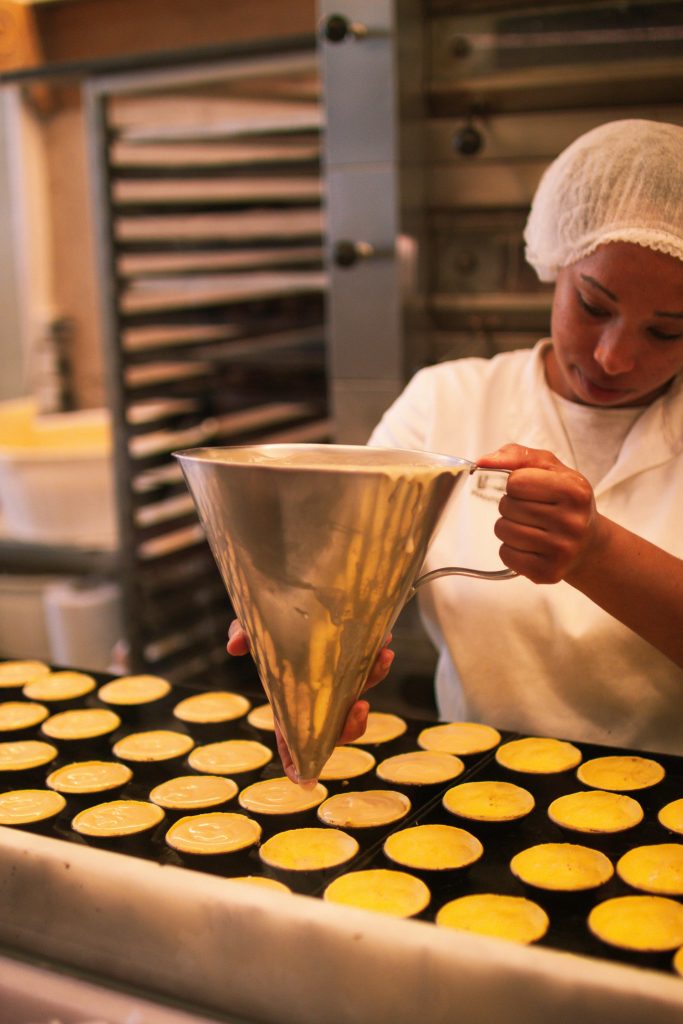
Where to Find Lisbon’s Best ‘Pasteis de nata’
Belém – Pastéis de Belém
The best place to start your Pastel de Nata journey is where it originated, Pastéis de Belém. Belém is a laid-back neighbourhood west of the main part of the city along the Tagus River. This storefront might look small, but if you venture inside, you’ll see that the interior stretches out for miles. Even on a busy day, if you decide to take a seat, you’ll find you can almost always get a table outside the lunch and dinner hour.
You might have to wait a bit longer to be served, but the ambiance and traditional decor of the interior are well worth enjoying for an extended period. The tarts are unique compared to any of the other ones we tasted. They are much more creamy and less sweet. The egg flavour really stands out. The crust was also slightly thicker to hold up the more substantial custard.
What makes them stand out?
Authenticity. Some of the more upscale bakeries in the city feel like they’re exploiting the tourist trend for these desserts. Pastéis de Belém serves many tourists, but their service and flavours aren’t trying to put on airs or impress. They are just there to serve the same recipe they’ve been selling for hundreds of years.
Cost: 1,05 €/each
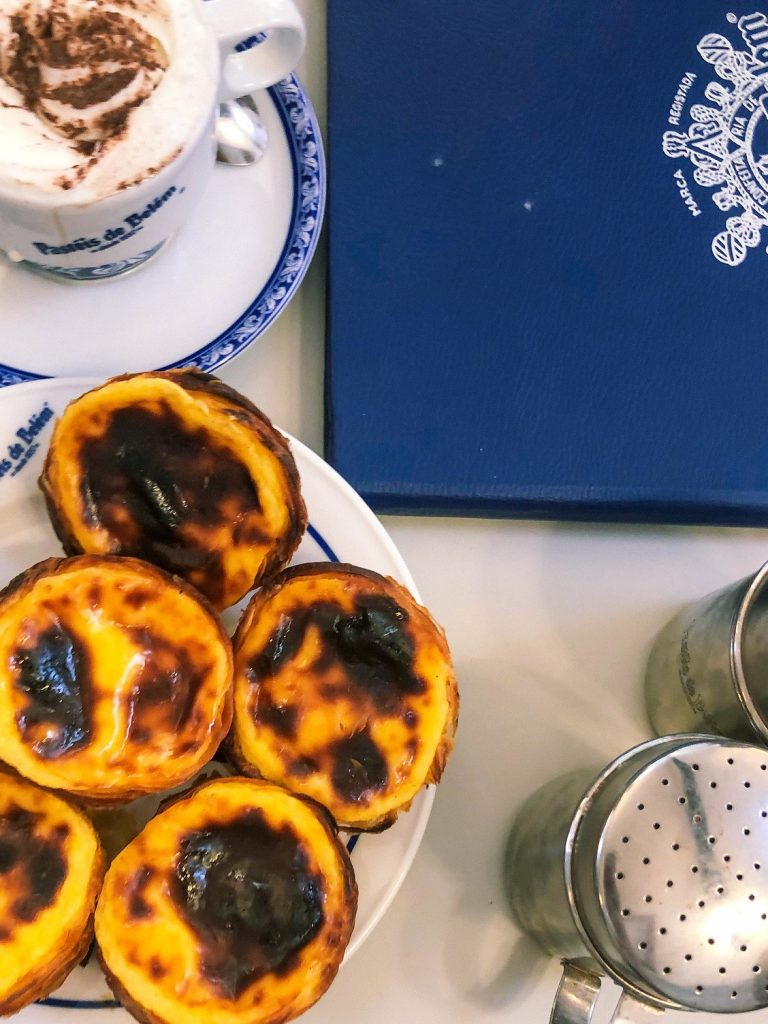
Avenida da Liberdade – Fábrica da Nata
Fábrica da Nata has a few different shops in Lisbon, but the one on the Avenida da Liberdade is their most opulent and indulgent. The Avenida da Liberdade and Principe Real neighbourhood is an upscale stretch of Lisbon’s city centre, famous for its expensive shopping and luxurious architecture. As soon as you step in the door, the smell of sweet cream and flaky crust fills your nose. You can watch the bakers carrying trays of hundreds of tarts, sprung straight from the oven, jetting back and forth from the kitchen to the display cases.
A little conveyor belt runs along the ceiling, holding (fake) trays of pastries, carrying them all around the shop’s roof. While it’s just a gimmick, it adds a cute, almost Willy Wonka-like effect to the cafe. Fábrica da Nata is fabulously decorated, with blue tiles and lush seating. After all, you eat with your eyes, so no one will say no to such a beautiful environment. The tarts are almost always hot since there is nearly constantly a line up out the door (it moves very quickly, though, so don’t let that scare you off). While this might be a controversial opinion, these were my #1 tarts we had the entire trip!
What makes them stand out?
The crust! I found that the crusts were by far the crispiest, and there was a stronger hint of salt in them which seemed to balance the sweetness of the filling perfectly! If you love a salty-sweet treat, this is the place for you.
Cost: 1,00 €/each
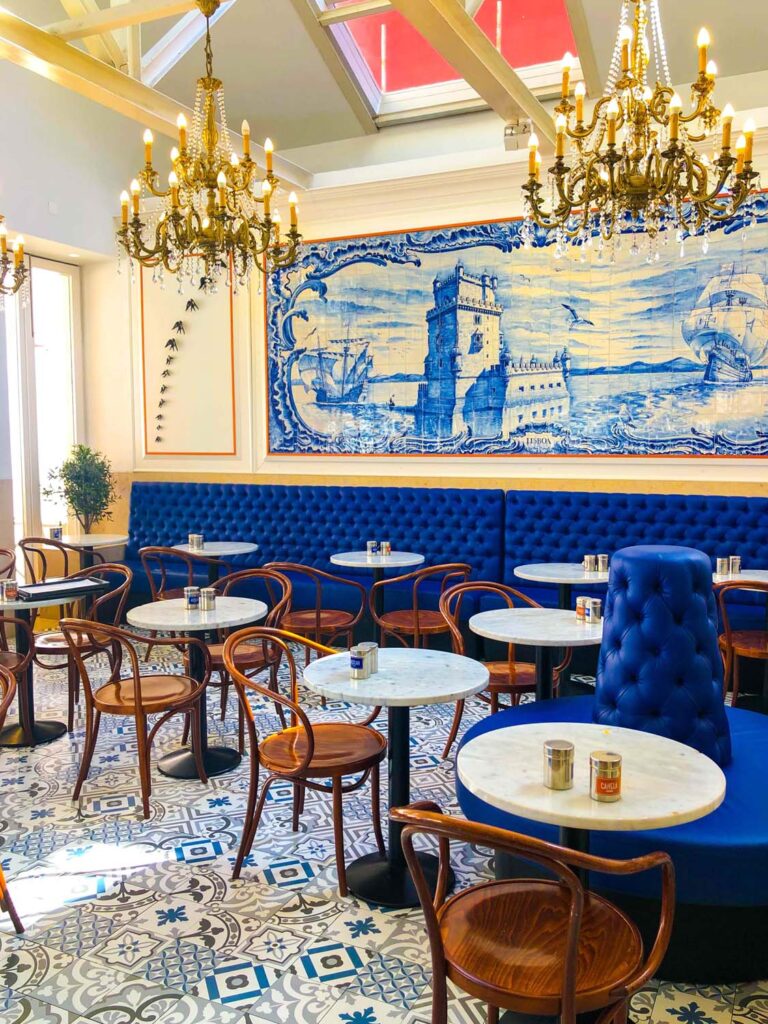

Baixa – Confeitaria Nacional
Baixa is the historic heart of Lisbon and where you’ll find the oldest buildings in the city here. Confeitaria Nacional is the oldest pastry shop in Lisbon; it opened in 1829 and is now considered somewhat of a national monument. The dim, yellow glow from the old lamps reflecting off the mirrored ceiling is the first thing you’ll see upon entering. In glass cases around the room are displays of the various colourful cakes and desserts for which the bakery is so famous.
What makes them stand out?
The flavours. The second owner of the shop, Baltazar Castanheiro Jr., spent much of their life travelling and bringing back recipes from other countries to incorporate into his pastries. He even dared to do so with the famed Portuguese sweet tart. Here you can find more than just plain custard; you can sample coffee, chocolate and pistachio Pasteis de nata! While this might not be the most authentic, it’s refreshing to see that he wanted to try something new. Can you imagine if all we had back home was plain doughnuts? Pretty hard to envision. The same kind of thing applies here, and it’s definitely worth trying to a twist on the original.
Cost: 1,20 €/each
Cais do Sodré – Zarzuela
Cais do Sodre, located south of the city centre, along the river, is one of the city’s most trendy and fashionable neighbourhoods. It has only recently undergone a hipster rejuvenation, but dozens of mom-and-pop cafes and restaurants are booming in this neighbourhood revival! This laid-back bakery doesn’t have many frills, but what it lacks in decor, it makes up for in dedication! Zarzuela serves up traditional Portuguese gluten-free, lactose-free and even vegan baked goods. Making gluten-free baked goods taste like the authentic, wheat-filled version takes real skill, and I made sure to try out plenty of their desserts and was amazed at how good they all were. Make sure to eat them warm as gluten-free items don’t stand the test of time like other pastries can, and fresh out of the oven, they are the most delicious!
What makes them stand out?
Giving EVERYONE a chance to taste Portugal’s culinary history! While the taste might not be the same as the real thing, it’s a fantastic option for travellers with dietary restrictions who often never get the chance to sample this kind of baked goods. The gluten-free tart has a much thicker crust, but the filling is the same as any other bakery. I didn’t love the flavours of the vegan tart, but I know other vegans who are used to the taste of soy and egg substitutes who really enjoyed it and appreciated the chance to try it out. If you have anyone in your party with dietary needs, you CANNOT miss out on visiting Zarzuela. (P.s. be sure to try the doughnuts, they are insanely good!)
Cost: 2,20 €/each
Chiado – Manteigaria
The Chiado neighbourhood in Lisbon is one of the best places to visit come the setting of the sun. The district comes alive at night and bursts with people drinking on the cobblestones (since the bars themselves are much too small to fit all those patrons). But during the daytime, the lineups on the street are for one thing only; Pasteis de nata! Manteigaria, now one of Lisbon’s most visited pastel de nata bakeries, was once just a simple butter shop. You’ll see tiled signs all over the city for ‘Manteigarias‘ (butter shops) and ‘Leitarias‘ (milk shops) with images of beautiful milkmaid.
With the invention of the supermarket, these specialized stores died out, although their attractive signage was left as a memento of bygone times. Manteigaria opened in 2015 and quickly became the #1 stop to eat Pasteis de nata! Critiques have even named this location over the original Belem bakery, the best place to eat natas in Lisbon. While I still prefer Fabrica de Nata, this is a CLOSE second.
What makes them stand out?
What makes them stand out? The filling. The complex taste of the custard here is what you notice most; it feels more complicated and nuanced than the original. The crust is much thinner and, therefore, very crispy and light, allowing that creamy, layered essence of eggs and milk to come through nice and bright! It’s so easy to eat more than just one…or two…or three…
Cost: 1,00 €/each
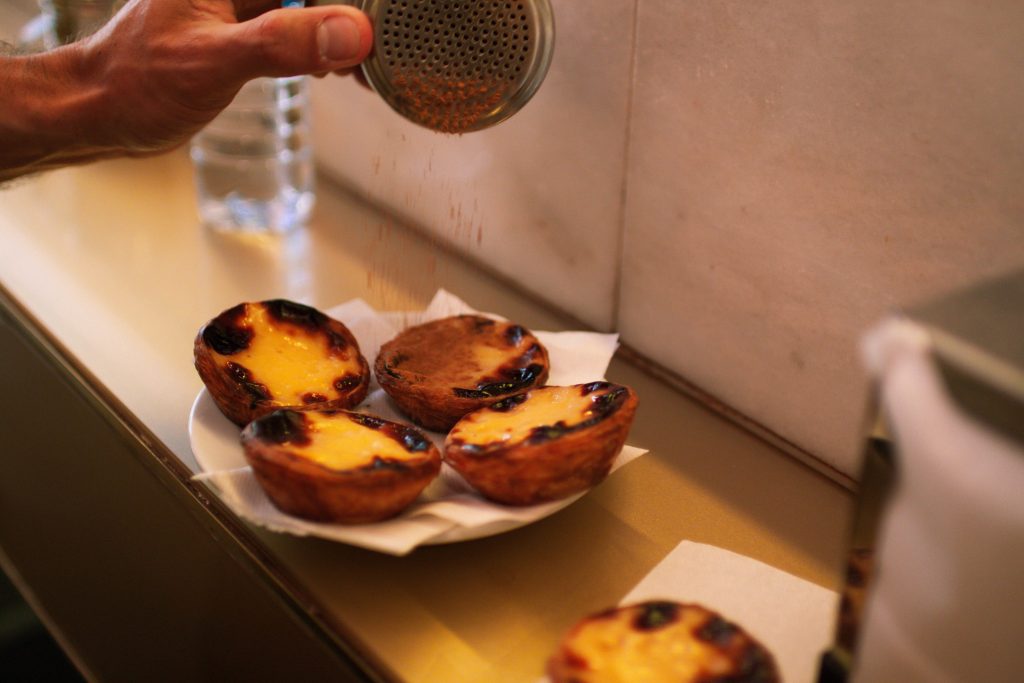
Barrio Alto – Pastelaria Padaria Sao Roque
Up the cobblestone steps from Chiado, you’ll find the bohemian neighbourhood of Bairro Alto. This district has some of the most quirky restaurants and traditional Fado bars playing music well into the early morning. Pastelaria Padaria Sao Roque is otherworldly and fits right in this over-the-top block. You’ll be in awe when you walk in the door by the ornate, embellished ceiling, bronze marble columns, and art deco azulejos adorning the walls and countertop.
What makes them stand out?
Sweetness. If you have a sweet tooth, this is the place for you! This shop’s Pasteis de nata are extremely sweet, and their crust extremely flaky! You can see almost every layer of the pastry peeling back like the petals of a flower on the plate. The crust is crunchy and eaten with an espresso; it feels like the perfect balancing act to a splendid morning meal.
Cost: 1,00 €/each
Alfama – Pastelaria Alfama Doce
Alfama is Lisbon’s oldest neighbourhood; perhaps because of this, it’s also home to the city’s best residents. They have been living in this maze-like, steep hillside part of Lisbon for hundreds of years, and Alfama feels like a city. At Pastelaria Alfama Doce, you’ll find a glass cabinet filled with simple, traditional treats. In addition to fresh pastries, this place serves up the best freshly squeezed orange juice to enjoy along with your morning pastry.
What makes them stand out?
The hospitality. The friendly smiles and attention you’ll get in this area are unrivalled and exceptional. They feel like family welcoming you into their kitchen for your morning breakfast. Be sure to spend some time here chatting with the owners and locals since everyone has a story to tell and a recommendation you will be remiss not to take when visiting! Plus, they cost a bit less than any other locations, so you can chow down on more than just one!
Cost: 0,85 €/each
We tried so many other tarts from bakeries, not on this list, some of which we found really lacking. They were either too cold, hard, sweet or even bland. If you’re out to find your secret spot, venture outside this list and try to find your personal fave. But if you’re only visiting Lisbon for a short time and need to hit up the best places ASAP, then this list will serve you well. No matter where you end up in the city, an amazing pastel de nata cafe is nearby! Let me know which one of these bakeries was your favourite if you’ve already visited Lisbon or which one you think you’d be leaning toward if you’re planning on visiting soon!
Happy Travels, Adventurers!
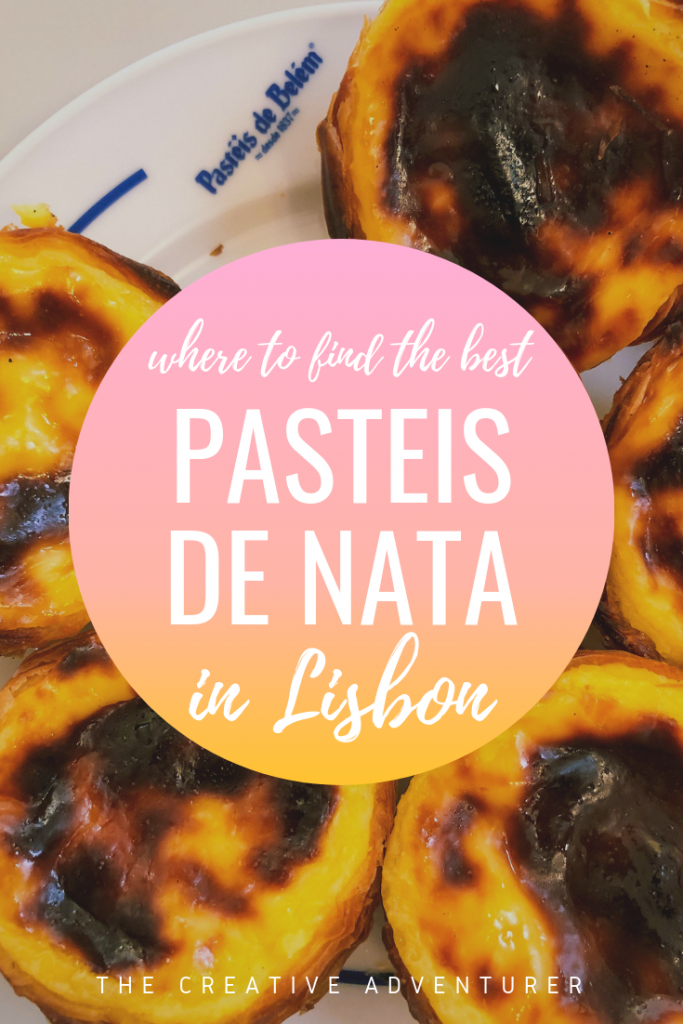

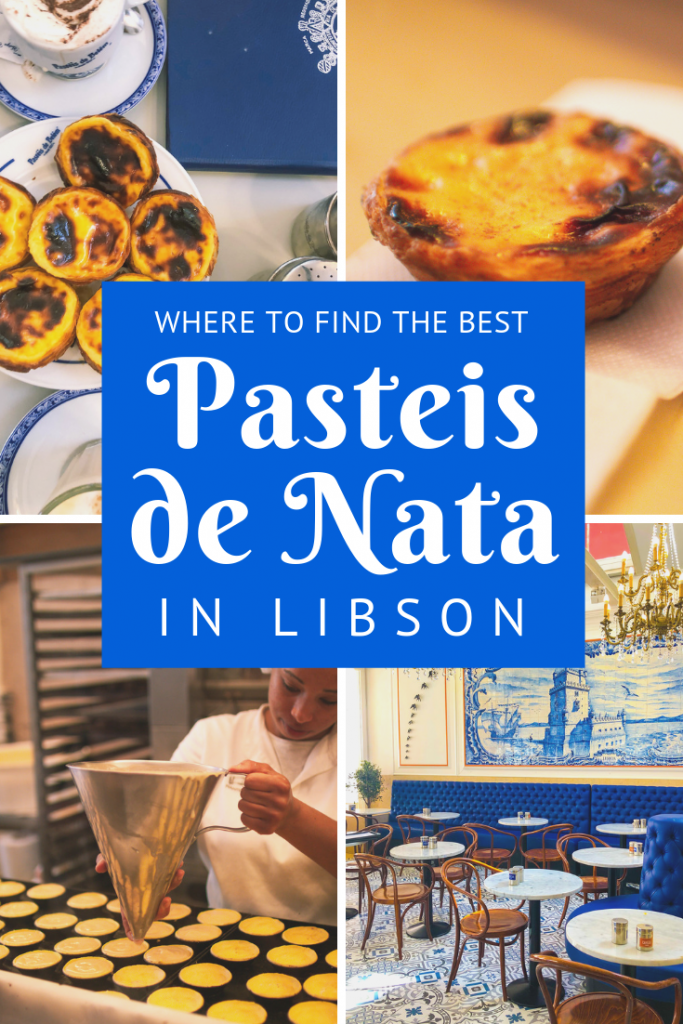


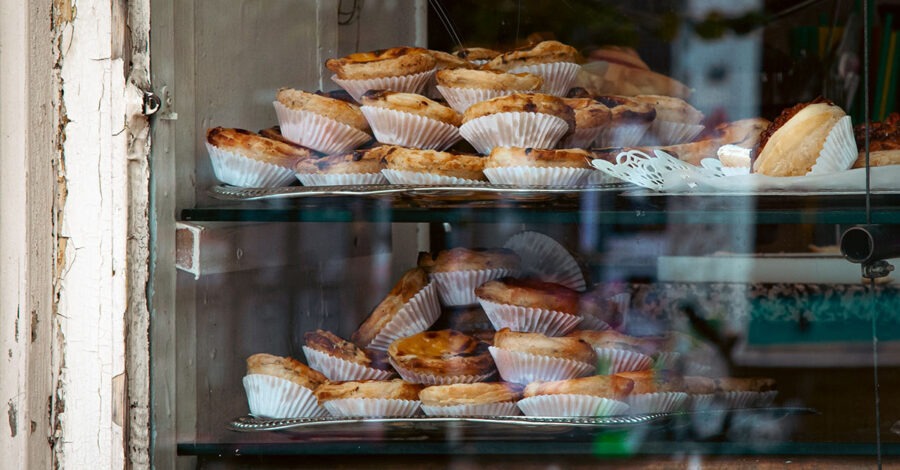
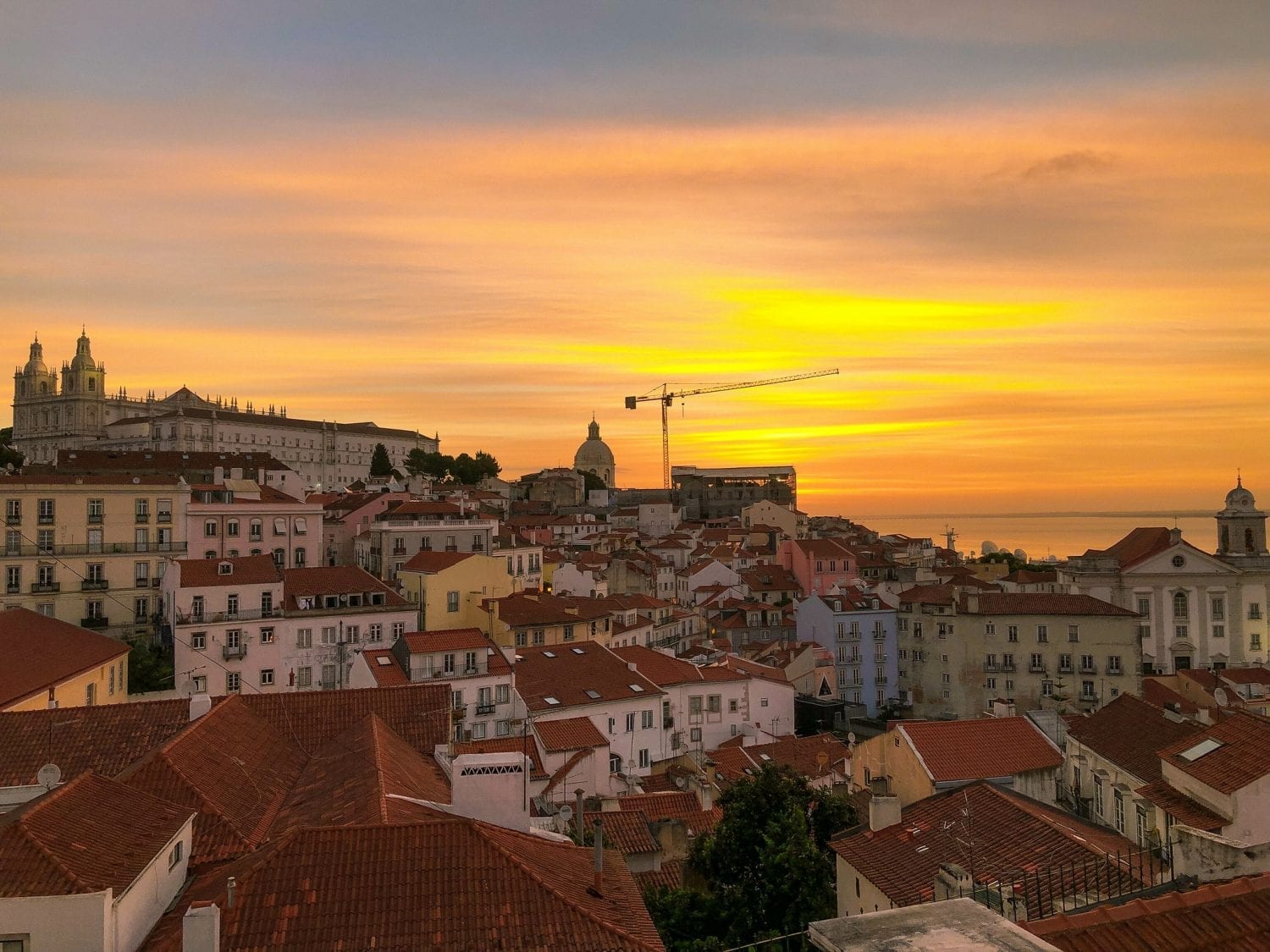

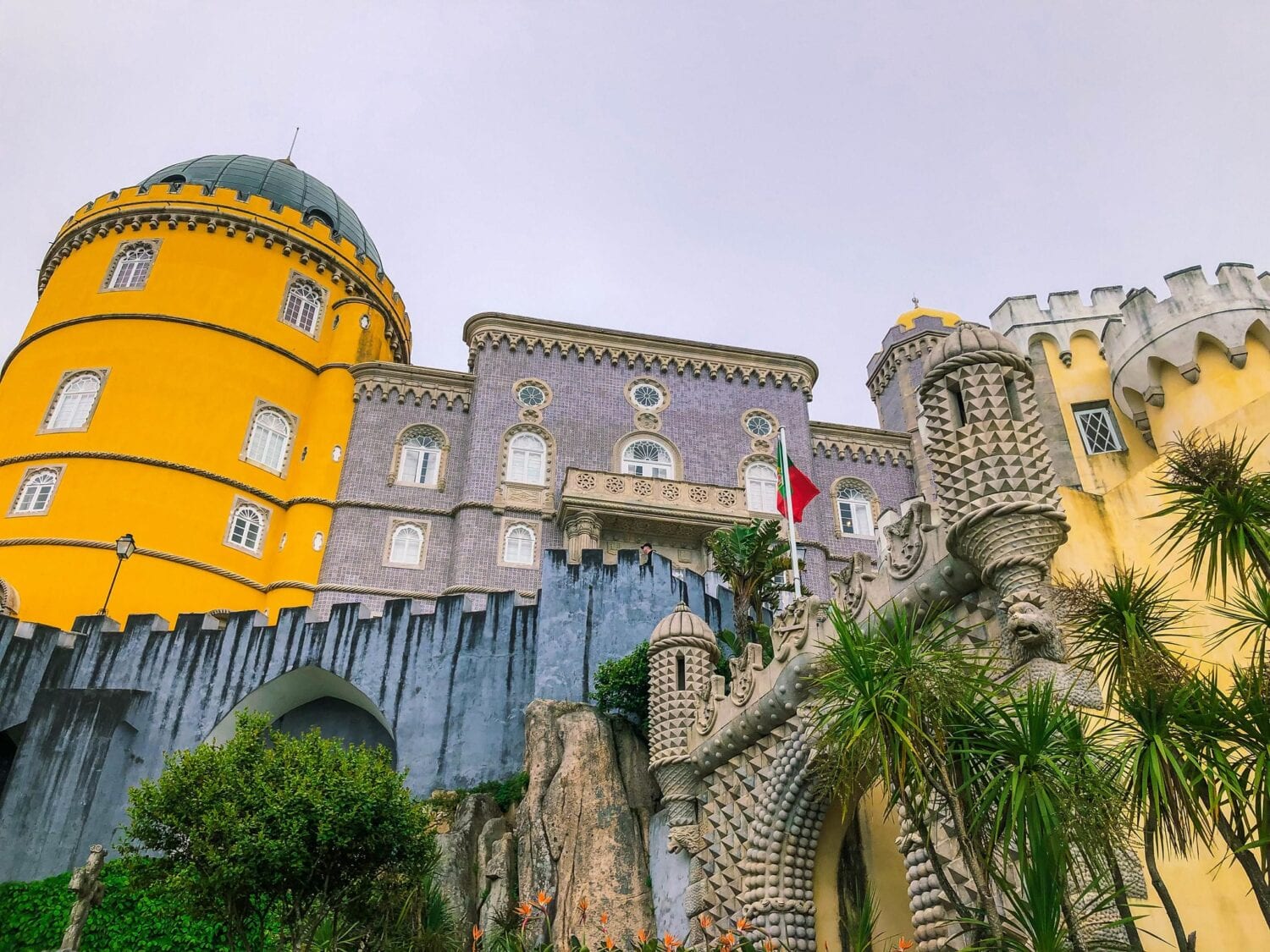
Leave a Comment